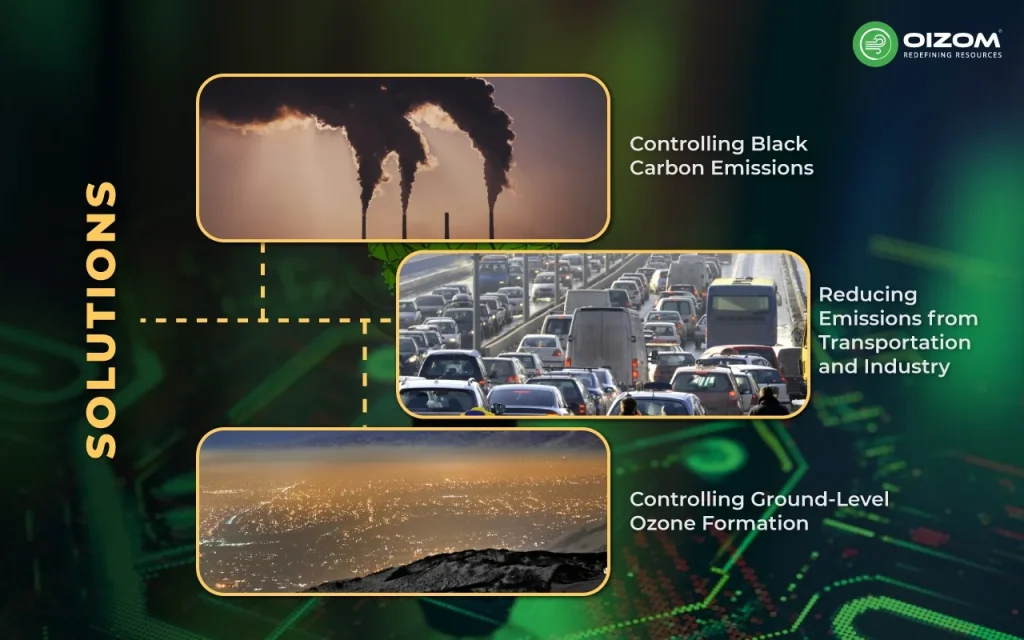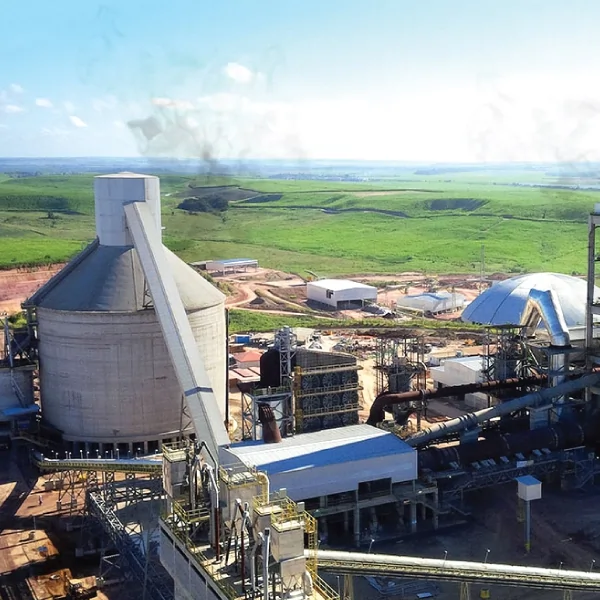Summary of Blog
Air pollution significantly contributes to global warming. Carbon dioxide (CO2), black carbon, and tropospheric ozone are key pollutants that trap heat in the atmosphere, raising global temperatures. CO2 and methane trap heat, preventing it from escaping, while black carbon and ozone from fossil fuels and industrial activities contribute to warming. Emissions from transportation, industry, and other sources are critical pollutants. Solutions to protect our environment from global warming include transitioning to renewable energy, greener technologies, and stricter pollution controls. Reducing air pollution will combat global warming and enhance public health, paving the path for a more sustainable future. Monitoring air quality and implementing effective controls are critical elements in this effort.
Understanding How Air Pollution Causes Global Warming
Many people are wondering whether pollution causes global warming. While air pollution may appear to be a new issue to some, it has been recognized as a threat to human health since around 400 BCE. However, when industrialization spread worldwide, pollution levels skyrocketed, causing numerous health problems for humans, animals, and plants. In recent decades, humans have become more aware of air pollution and climate change, and they have attempted to reduce air pollution. While we have made progress in these efforts, we still need to do more to help preserve our planet. This article will examine how air pollution contributes to global warming and discuss various solutions to reduce air pollution.
Air pollution as a contributing factor to global warming
Greenhouse gases like carbon dioxide are among the pollutants in the air. Greenhouse gases warm the temperature by trapping heat from the sun in the Earth’s atmosphere. Greenhouse gases are a natural feature of the Earth’s atmosphere, but their increased concentration in the atmosphere since the early 1900s has caused the temperature to warm.
Vehicle exhaust, pollution from factory and power plant smokestacks, agricultural emissions, and other sources contribute to the increase. As NASA has examined, smog and ozone directly impact global warming. It’s important to mention that ozone mainly influences the area where it’s created and causes drastic environmental changes. Let me share the role of greenhouse gases in contributing to air pollution.
Greenhouse Effect
“The greenhouse effect is the process by which radiation from the sun is absorbed by greenhouse gases rather than reflected back into space.” This insulates the earth’s surface and keeps it from freezing. Factories, transportation, deforestation, and other activities contribute significantly to greenhouse gas emissions. The growing number of factories and automobiles raises the level of these gases in the environment. Greenhouse gases never allow radiation to escape from the planet, increasing the earth’s surface temperature. This leads to global warming.
The Role of Greenhouse Gases
Many air pollutants operate as greenhouse gases, which are chemicals that absorb a large amount of heat and solar radiation as they enter the atmosphere, trapping the heat in this zone rather than releasing it back into space.
The structure of greenhouse gases allows them to absorb heat. The atoms of greenhouse gases, such as CO2, methane, water vapor, and nitrous oxides, are held loosely enough to vibrate when they absorb heat, releasing radiation that can be absorbed by another greenhouse gas in the atmosphere or travel down to the Earth’s surface.
The majority of the gases in Earth’s atmosphere are nitrogen and oxygen, which do not absorb heat. Though greenhouse gases account for only a small fraction of the Earth’s atmosphere, they significantly impact atmospheric warming.
Air Pollution's Amplifying Effect on Global Warming

A new study found that the effects of air pollution on human health, economies, and agriculture vary greatly depending on where the pollutants are released on the planet.
Led by scientists at The University of Texas at Austin and the University of California San Diego, the study, published in Science Advances, is the first to simulate how aerosol pollution affects climate and air quality for global locations.
CO2 and aerosols are frequently released simultaneously during fuel combustion, although the two chemicals behave differently in Earth’s atmosphere. Carbon dioxide has the same impact on the environment regardless of from which industries emit it. “However, because these aerosol pollutants tend to remain concentrated near where they are produced, their impact on the climate system is uneven and highly reliant on where they originate.
Black Carbon
Black carbon is a component of particulate matter that has a warming atmospheric effect. It is produced by incomplete burning of fossil fuels and other biofuels, such as wood, and it significantly impacts the climate. Black carbon is the second-largest contributor to climate change, after CO2, due to the quantity of solar radiation it absorbs. According to estimates from the Climate and Clean Air Coalition, black carbon’s warming impacts are 460 to 1,500 times stronger than CO2 per unit of mass.
Black carbon has a short lifetime in the atmosphere; thus, it returns to the Earth’s surface via rain or snow within a few days to weeks. It can then settle as soot on snow and ice, interfering with their typical reflecting characteristics, contributing to rapid melting in snow-covered areas, and influencing glacier melting and regular water supplies. Because black carbon interacts complicatedly with other pollutants, scientists do not fully understand how it may directly affect the climate.
I will share one fact about black carbon; here it is:

Tropospheric Ozone (Ground Level Ozone)
Tropospheric (or ground-level) ozone is a short-lived climatic pollutant that exists only for a few hours or weeks in the atmosphere. It has no direct emissions sources; instead, it is a molecule generated by the interaction of sunlight with volatile organic compounds (VOCs), including methane and nitrogen oxides (NOX), which are mostly emitted by human activities.
Ozone (O3) is a gas found in two layers of the atmosphere: the stratosphere (the top layer) and the troposphere. Strategies for preventing tropospheric ozone production rely mostly on reducing methane emissions and lowering levels of air pollution caused by automobiles, power plants, and other sources.
Did you know this Tropospheric ozone has an atmospheric lifetime ranging from a few hours to weeks in polluted urban regions.
Volatile Organic Compounds (VOCs)
Volatile organic compounds (VOCs) include butane, toluene, pentane, propane, xylene, and ethanol. Volatile organic compounds can originate from a variety of sources, including:
- Cars and gasoline-fueled engines
- Consumer goods such as paint, pesticides, and cleansers
- Industrial solvents and chemical manufacture.
VOCs can act as greenhouse gases, causing atmospheric warming. However, like CO, they largely contribute to climate change by participating in the chemical process that generates ground-level ozone. In the presence of sunshine, VOCs combine with nitrous oxides and carbon monoxide to form ozone.
According to 2021 research, HFCs and fluorinated gases are the fastest-growing greenhouse gases globally, especially in their emissions from economically developing countries.
Solutions

While its numerous and diverse effects may seem difficult to manage, we know how to reduce air pollution and greatly enhance air quality. The Climate and Clean Air Coalition has proposed a set of control measures that, if globally implemented by 2030, could reduce black carbon emissions by as much as 80%. To reduce the Air pollution, the first and foremost step is to have data on the air quality. To monitor AQI with Oizom devices, which use e-breathing technology for higher accuracy and provide real-time data. Moreover, the enclosure has an IP66-rated for tolerance against harsh weather conditions.
Controlling Black Carbon Emissions
The most effective strategy to lower black carbon concentrations in our atmosphere is to cut them off at the source. This involves changing away from burning fuel sources, whether fossil fuels, biofuels, or others, and toward renewable forms of power generation.
Reducing black carbon emissions can delay near-term climate warming, enhance crop yields, and prevent premature deaths. Because black carbon has a short atmospheric lifetime and high warming potential, focused emissions-reduction initiatives can bring climate and health advantages soon.
Reducing Emissions from Transportation and Industry
The transportation sector accounts for roughly 20% of black carbon emissions. Existing technologies and high-quality fuel can significantly minimize these pollutants, and mitigation measures can also be implemented to reduce black carbon emissions.
- Use diesel particulate filters in cars.
- Eliminate high-emission diesel automobiles.
- Transition to electric cars.
Controlling Ground-Level Ozone Formation
Here’s what we can do:
To reduce refueling emissions, use vapor recovery nozzles at gasoline pumps.
- Cleaner burning gasoline reformulated to minimize VOCs, NOx, and other contaminants.
- Strict NOx emission limitations for power stations and industrial combustion sources.
- Enhanced car inspection programs in states
- stricter solvent usage limits in industries.
Conclusion
Finally, Air pollution and greenhouse gas emissions are frequently two sides of the same coin. Air pollution is a climate, health, and environmental justice issue, and many air pollutants are also greenhouse gases, which contribute to the warming of the atmosphere by absorbing heat that enters it. When we take action to reduce the air pollutants covered in this article, we also make a meaningful, measurable impact on mitigating the worst effects of black carbon, ground-level ozone, and VOC. It is a wake-up call for all government authorities to increase awareness regarding air quality improvement. Air quality measurement has become more important than ever. Collaboration is key to creating healthier cities and a sustainable future for all in terms of health and the environment.
Greenhouse gases trap heat in the Earth's atmosphere, causing the planet to warm and contributing to global warming.
The major greenhouse gases are carbon dioxide (CO2), methane (CH4), nitrous oxide (N2O), and water vapor. CO2 comes from fossil fuels, methane from agriculture and industry, nitrous oxide from fertilizers, and water vapor amplifies warming.




